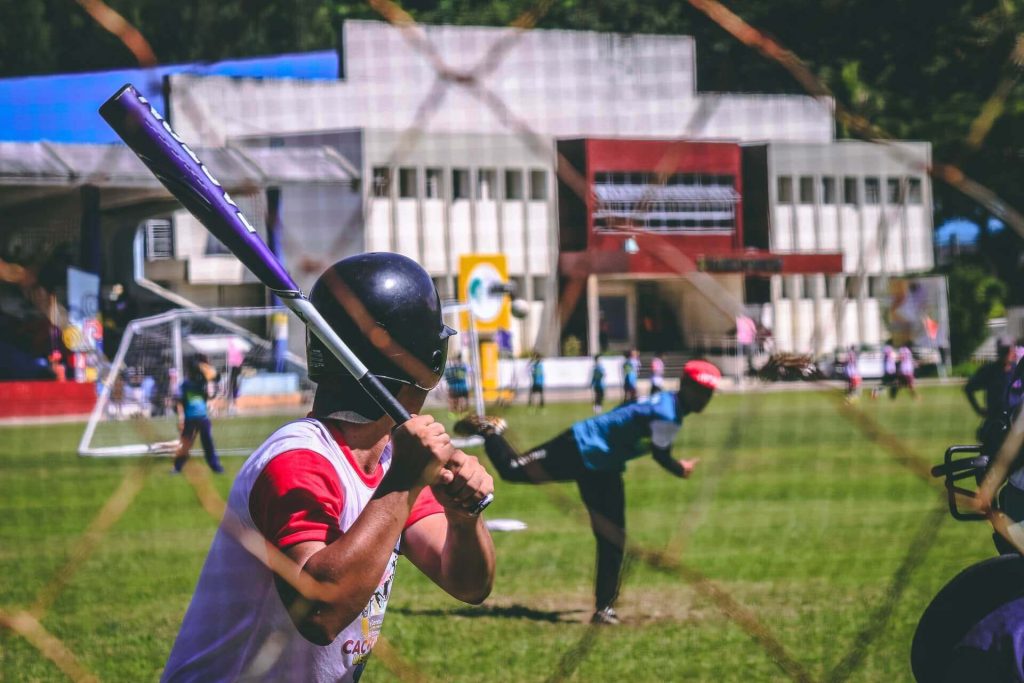Introduction: Why Baseball Injuries Are More Common Than You Think
Baseball is a game of precision, power, and endurance—but it’s also a sport that takes a huge toll on your body. From powerful throws to explosive swings, your joints, muscles, and ligaments absorb a ton of force.
Yet, most athletes don’t take injury prevention seriously until pain stops them from playing. That’s when they start scrambling for answers—Googling “baseball injury recovery,” hoping a YouTube stretch or ice pack will magically fix everything.
The truth? Most baseball injuries are preventable—if you know what’s causing them.
So, if you want to play pain-free, throw harder, and avoid time on the bench, here’s what you need to know about the 5 most common baseball injuries—and, more importantly, how to prevent them.
1. Shoulder Injuries: Why Pitchers & Position Players Are at Risk
If you play baseball, your shoulder is at risk—period.
Repeated overhead throwing puts massive stress on the rotator cuff and labrum. Over time, this wears down the joint, leading to:
- Rotator cuff tendinitis (pain and weakness in the shoulder)
- SLAP tears (damage to the labrum, common in pitchers)
- Shoulder impingement (pinching of tendons due to poor mechanics)
How to Prevent a Shoulder Baseball Injury:
Strengthen your scapular muscles to stabilize the shoulder
Improve thoracic mobility (your upper back needs to rotate properly)
Work on proper throwing mechanics—bad form leads to bad injuries
Don’t ignore small aches—shoulder pain doesn’t just go away on its own
The biggest mistake? Ignoring recovery. Shoulder injuries happen when you overuse the joint without giving it time to heal. If you feel tightness, don’t push through it—get it checked.
2. Elbow Pain: The Dangerous Reality of Overuse Injuries
Ever heard of Tommy John surgery? It’s a pitcher’s worst nightmare.
Most elbow baseball injuries happen because of overuse. Too many pitches, too many hard throws, and not enough recovery lead to:
- UCL (Ulnar Collateral Ligament) tears—which require surgery
- Little League elbow (yes, it happens in kids who throw too much)
- Golfer’s elbow (pain on the inside of your elbow)
How to Prevent an Elbow Baseball Injury:
Limit high-stress throws (pitch count rules exist for a reason)
Strengthen your forearm muscles—stronger grip = less elbow strain
Work on your shoulder mechanics (bad form = elbow overload)
Don’t skip recovery days—your elbow needs them more than you think
Rule of thumb: If your elbow hurts before or after throwing, don’t ignore it. That’s a warning sign that something’s off—fix it before it gets worse.
3. Hamstring Strains: Why Speed Can Cost You
Nothing derails a game faster than pulling a hamstring while sprinting to first base. Hamstring injuries are common in baseball because explosive movement (like sprinting or sudden stops) puts huge stress on the muscle.
How to Prevent a Hamstring Baseball Injury:
Increase eccentric strength (train your hamstrings to handle force)
Improve hip mobility—tight hips = overworked hamstrings
Warm up properly—cold muscles tear more easily
Don’t just stretch—strengthen (weak hamstrings = easy injury)
Most players focus on quads but forget their hamstrings. Balance both, and you’ll reduce your risk of getting sidelined by a painful strain.
4. Lower Back Pain: The Hidden Baseball Injury No One Talks About
If your lower back feels tight or sore after batting practice, you’re not alone.
Most baseball players don’t realize how much their core affects their swing. A weak core and tight hips force the lower back to compensate, leading to:
- Muscle strains (sharp pain when twisting or bending)
- Herniated discs (chronic pain, numbness, and weakness)
- Stress fractures (common in younger players)
How to Prevent a Lower Back Baseball Injury:
Strengthen your core—especially anti-rotational exercises
Improve hip mobility—stiff hips = more stress on your back
Avoid excessive arching when swinging or throwing
Pay attention to pain—early tightness often leads to bigger issues
If you feel stiffness or discomfort, don’t just “tough it out.” Fix it before it becomes a season-ending injury.
5. Ankle & Knee Injuries: The Chain Reaction You Can’t Ignore
Your ankles and knees absorb every movement—whether you’re sprinting, sliding, or planting your foot to throw.
A weak base leads to instability, increasing your risk of:
- ACL/MCL tears (common in baserunners and outfielders)
- Ankle sprains (rolling your ankle from sudden cuts or slides)
- Patellar tendinitis (aka “jumper’s knee” from repetitive jumping/running)
How to Prevent an Ankle or Knee Baseball Injury:
Strengthen your glutes & quads—they stabilize the knee
Improve ankle mobility—stiff ankles = more knee stress
Wear proper cleats—wrong footwear increases injury risk
Train balance & proprioception—better control = fewer injuries
Most knee and ankle injuries aren’t accidents—they’re caused by weak stabilizers that can’t handle impact. Train smarter, and you’ll stay injury-free.
How to Keep Playing Without Injury
Baseball is tough on the body—but you don’t have to accept injuries as part of the game. The best players train smarter, recover better, and fix problems before they start.
If you’re serious about:
- Throwing harder & hitting stronger without pain
- Avoiding common baseball injuries that sideline players
- Learning the RIGHT way to train for performance & injury prevention
Then don’t wait until you’re in pain to take action.
FREE Baseball Injury & Performance Assessment This Month!
At McKenzie Sports Physical Therapy, we are dedicated to helping athletes maximize their potential by integrating comprehensive physical therapy programs into their training regimen.
If you’re an elite baseball player looking to elevate your game, reduce the risk of injury, or recover from a setback, contact us today at (267) 332-8102 or click here to book a free baseball assessment and take the next step in your athletic journey.


